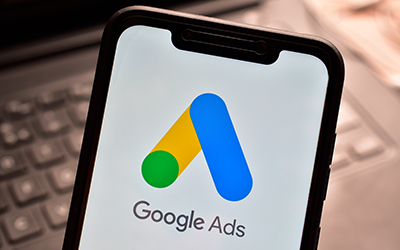Customer Experience strategies for higher education institutions
 Customer experience (CX) is a sometimes overlooked but crucial strategy for higher education institutions. In many ways, customer Experience strategies for higher education can mean the difference between success and failure when it comes to the recruitment and retention of graduate students.
Customer experience (CX) is a sometimes overlooked but crucial strategy for higher education institutions. In many ways, customer Experience strategies for higher education can mean the difference between success and failure when it comes to the recruitment and retention of graduate students.
To ensure the best customer experience possible for students, higher education institutions need to understand exactly who their audience is, embrace the latest technology, and focus on creating a personalized, seamless experience for its students (customers). Here’s a closer look at how to do just that.
Know your audience
First and foremost, it’s crucial to understand your core audience.
Look at the data for your prospects, new students, and the existing graduate student body very closely. What are their demographics? What are they currently studying or looking to study? Are they local or from across the country or even the world? By having a strong grasp of your audience, you can better hone your CX strategy specifically to them.
Create a seamless experience
Creating a seamless, intuitive, and simplified customer experience is also very important.
This is especially critical when it comes to technology. All too often, schools design their online services with themselves in mind, as opposed to their prospects and students. Instead, embrace digital transformation and a customer-centric approach by creating user-friendly, seamless customer portals where students can find all of the information they need in a single, unified location and conduct a website audit to ensure your site is intuitive, easy to navigate, and has all of the key information that students and prospects need clearly stated.
Leverage the latest technology
Technology can also go a long way towards improving your CX.
Embrace it as a way to boost your customer service and provide a more seamless, user-friendly experience for your students and prospects. This can be done by leveraging chatbots to resolve simple questions and issues quickly and successfully, customer relationship management (CRM) tools to track every conversation and keep important data in a single location, and various social media channels to convey critical information and boost engagement.
Focus on personalization
Personalization is also key.
Today’s graduate students are increasingly diverse. Rather than treating them as a whole, personalize your communications and interactions with them to better suit who they are, which can lead to improved metrics like conversions and retention. To accomplish this, use personalized emails, custom videos, and tailored social media communications.
Create a guided experience
Finally, focus on creating a tailored, curated experience for your students and prospects.
Navigating the graduate school process can be very stressful and intimidating for both prospects and students. However, by creating a guided, personalized experience, you can reduce this stress and improve your customer satisfaction. Embracing technology and tools like screen sharing, video chat, co-browsing, and tailored email communications can help create a guided experience that will improve your overall CX greatly.
Improve your customer experience strategies for higher education institutions
CX should be a top priority for any higher education institution looking to boost student recruitment and retention. By implementing these strategies and best practices, you can ensure you are delivering world-class customer service to your audience, increasing recruitment and boosting retention all at once.

 As 2024 dawns, higher education institutions all across the country are hard at work preparing for the next wave of graduate school students with marketing and recruitment efforts. But what do grad students really want in 2024?
As 2024 dawns, higher education institutions all across the country are hard at work preparing for the next wave of graduate school students with marketing and recruitment efforts. But what do grad students really want in 2024? It’s no secret that higher education institutions face growing skepticism from the public for many reasons these days. High tuition costs, questions about return on investment, demographic shifts, and the rising popularity of trade schools, certificates, and other alternatives are just some of the reasons why higher education institutions are seeing shifts in enrollment. So, how do you increase enrollment amid rising higher education skepticism?
It’s no secret that higher education institutions face growing skepticism from the public for many reasons these days. High tuition costs, questions about return on investment, demographic shifts, and the rising popularity of trade schools, certificates, and other alternatives are just some of the reasons why higher education institutions are seeing shifts in enrollment. So, how do you increase enrollment amid rising higher education skepticism? Paid search ads (also known as pay-per-click, or PPC ads) can be a powerful marketing tool for graduate schools for many reasons. How so? Paid search best practices and strategies for grad schools allow for specific demographic targeting based on specific criteria, can be turned on to generate leads almost instantly, and offer a lot of flexibility when it comes to crafting your messaging and marketing goals, such as boosting brand awareness,
Paid search ads (also known as pay-per-click, or PPC ads) can be a powerful marketing tool for graduate schools for many reasons. How so? Paid search best practices and strategies for grad schools allow for specific demographic targeting based on specific criteria, can be turned on to generate leads almost instantly, and offer a lot of flexibility when it comes to crafting your messaging and marketing goals, such as boosting brand awareness,  Although social media has been all the rage over the past few years when it comes to marketing to prospective graduate school students, email remains a very cost-effective and reliable method for communicating with prospects. As with all forms of marketing, email marketing has changed a lot over the years, meaning that higher education institutions need to know the current best practices and strategies to ensure that they’re using it effectively for grad school email marketing.
Although social media has been all the rage over the past few years when it comes to marketing to prospective graduate school students, email remains a very cost-effective and reliable method for communicating with prospects. As with all forms of marketing, email marketing has changed a lot over the years, meaning that higher education institutions need to know the current best practices and strategies to ensure that they’re using it effectively for grad school email marketing. The way higher education institutions market themselves to prospects has changed dramatically in a short amount of time. The rise of social media and the growing importance of content marketing, especially video marketing, has forced colleges to grapple with new ways to improve their university’s brand awareness and reach prospects effectively.
The way higher education institutions market themselves to prospects has changed dramatically in a short amount of time. The rise of social media and the growing importance of content marketing, especially video marketing, has forced colleges to grapple with new ways to improve their university’s brand awareness and reach prospects effectively. Higher education is constantly changing, with each year ushering in new challenges – but also new opportunities. The COVID-19 pandemic and its aftermath both sparked, as well as accelerated many notable trends. Following are higher education trends to watch in 2024 that are likely to impact undergraduate and graduate programs.
Higher education is constantly changing, with each year ushering in new challenges – but also new opportunities. The COVID-19 pandemic and its aftermath both sparked, as well as accelerated many notable trends. Following are higher education trends to watch in 2024 that are likely to impact undergraduate and graduate programs. Content is king when it comes to promoting a university to a target audience – but just how do you go about higher education content marketing effectively?
Content is king when it comes to promoting a university to a target audience – but just how do you go about higher education content marketing effectively? Your local marketing agency might seem like a tempting choice to fulfill your higher education enrollment goals, but is it the right fit? Let’s explore the reasons why relying on a local, generalist agency may not be the best strategy for your higher education institution.
Your local marketing agency might seem like a tempting choice to fulfill your higher education enrollment goals, but is it the right fit? Let’s explore the reasons why relying on a local, generalist agency may not be the best strategy for your higher education institution. You’ve launched brand awareness and lead generation marketing campaigns in the past for your institution, but something still seems a bit off in your marketing strategy. Are you taking grad school demand generation best practices and strategies into account?
You’ve launched brand awareness and lead generation marketing campaigns in the past for your institution, but something still seems a bit off in your marketing strategy. Are you taking grad school demand generation best practices and strategies into account?
